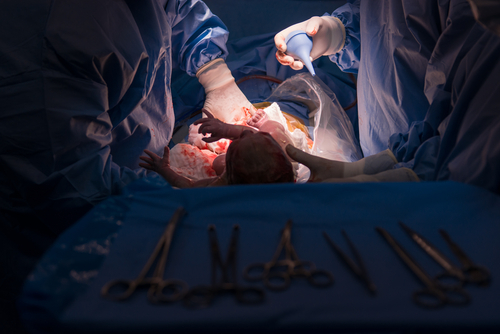Attempted vaginal birth after cesarean associated with higher adverse effects and mortality: Study
ANI May 08, 2018
Scientists from the University of Alberta have found that attempted vaginal birth after cesarean (VBAC) is associated with higher rates of adverse effects or death for mothers and infants.

The team of researchers from various institutions, decided to explore the question and its probable answers, although absolute rates were low in mothers who attempted this type of birth. "The absolute rates of adverse maternal and neonatal outcomes are low with both attempted VBAC and elective repeat cesarean delivery," said researcher Carmen Young. "Both are reasonable options for women in general; however, attempted VBAC continues to be associated with higher relative rates of severe adverse maternal and neonatal outcomes compared with an elective repeat cesarean delivery."
For women who have had a single previous cesarean section, the best mode of delivery in a later pregnancy is controversial, as there are risks and benefits to attempting a VBAC or having an elective repeat cesarean section. Attempted VBAC is associated with a higher risk of uterine rupture, haemorrhage and other maternal and infant complications. Repeat cesarean sections are associated with an increased risk of surgical complications and placental complications in subsequent pregnancies. It is also difficult to predict which patients will have a successful VBAC.
Planning mode of delivery for women with a previous cesarean delivery is, therefore, challenging for both the patient and her care provider. Researchers conducted a study using information on all women in Canada (excluding Quebec) who had a previous cesarean delivery and subsequently delivered between 2003 and 2015. The study found that although the number of women with a previous cesarean delivery increased from 2003 to 2014, rates of attempted VBAC and success rates after attempting labour were essentially unchanged.
"This topic is an important issue because rates of cesarean section continue to rise and the most common single indication for a cesarean delivery is a prior cesarean delivery," said Young. "Once a woman has had two cesarean deliveries, she is very unlikely to have a subsequent vaginal delivery due to high maternal and neonatal risks associated with labour." The authors also found that infant, but not maternal, outcomes, have worsened between 2003 and 2015 after attempted VBAC.
The study highlighted the importance of appropriate patient selection for attempting VBAC and careful monitoring of labour and delivery to optimize safety for these women and their infants. "For women who may be candidates for an attempted VBAC, the choice between an elective repeat cesarean delivery and an attempted VBAC depends on the woman's desire for a vaginal delivery, her tolerance for risk and whether she is planning a small or large family," says Young. The study appears in the Canadian Medical Association Journal.
-
Exclusive Write-ups & Webinars by KOLs
-
Daily Quiz by specialty
-
Paid Market Research Surveys
-
Case discussions, News & Journals' summaries